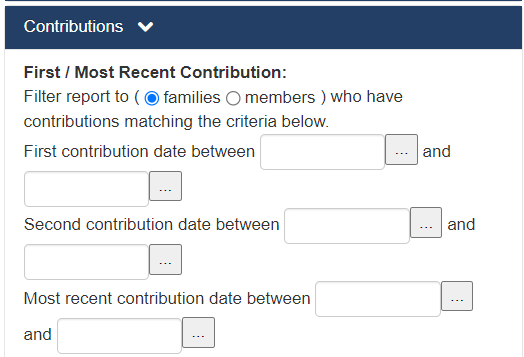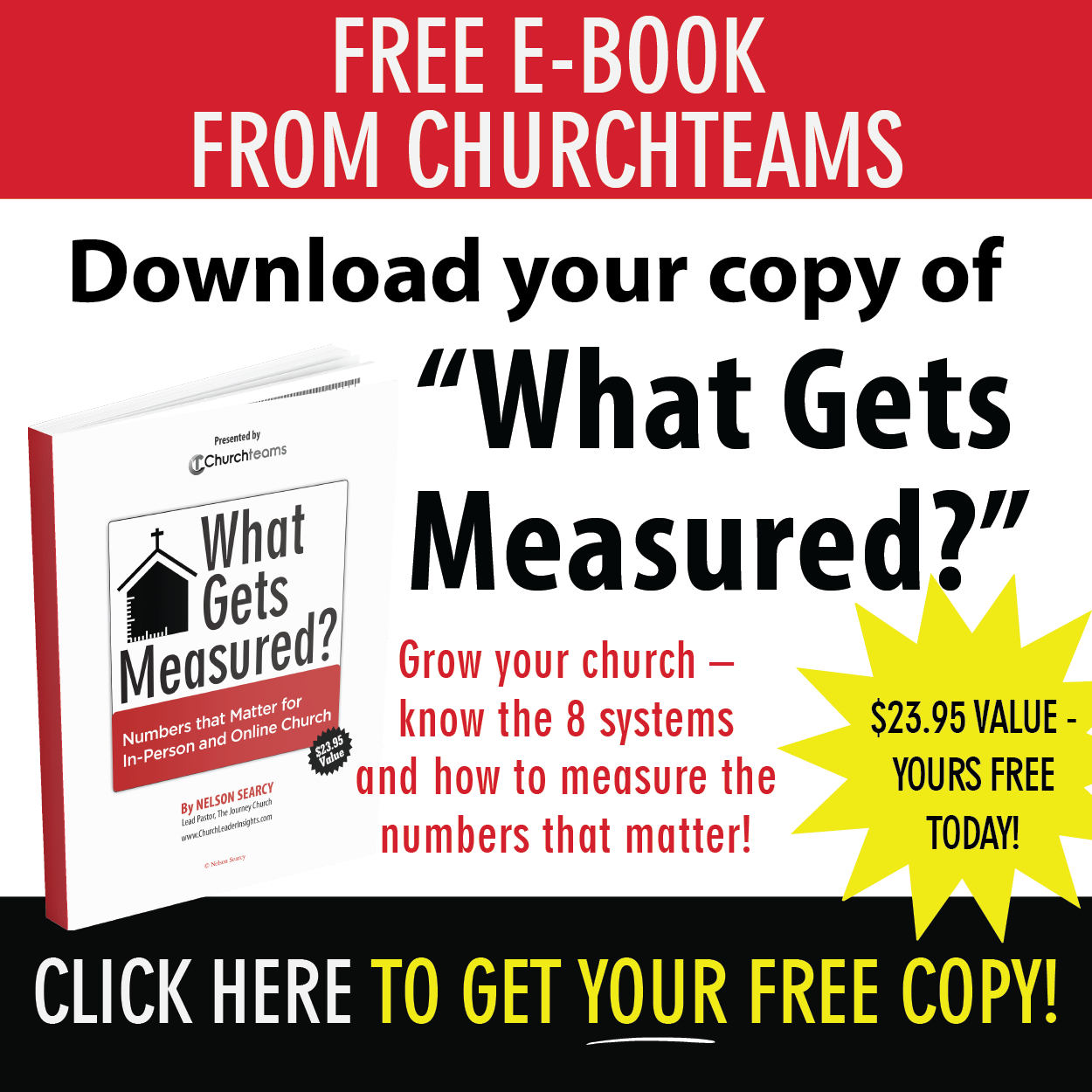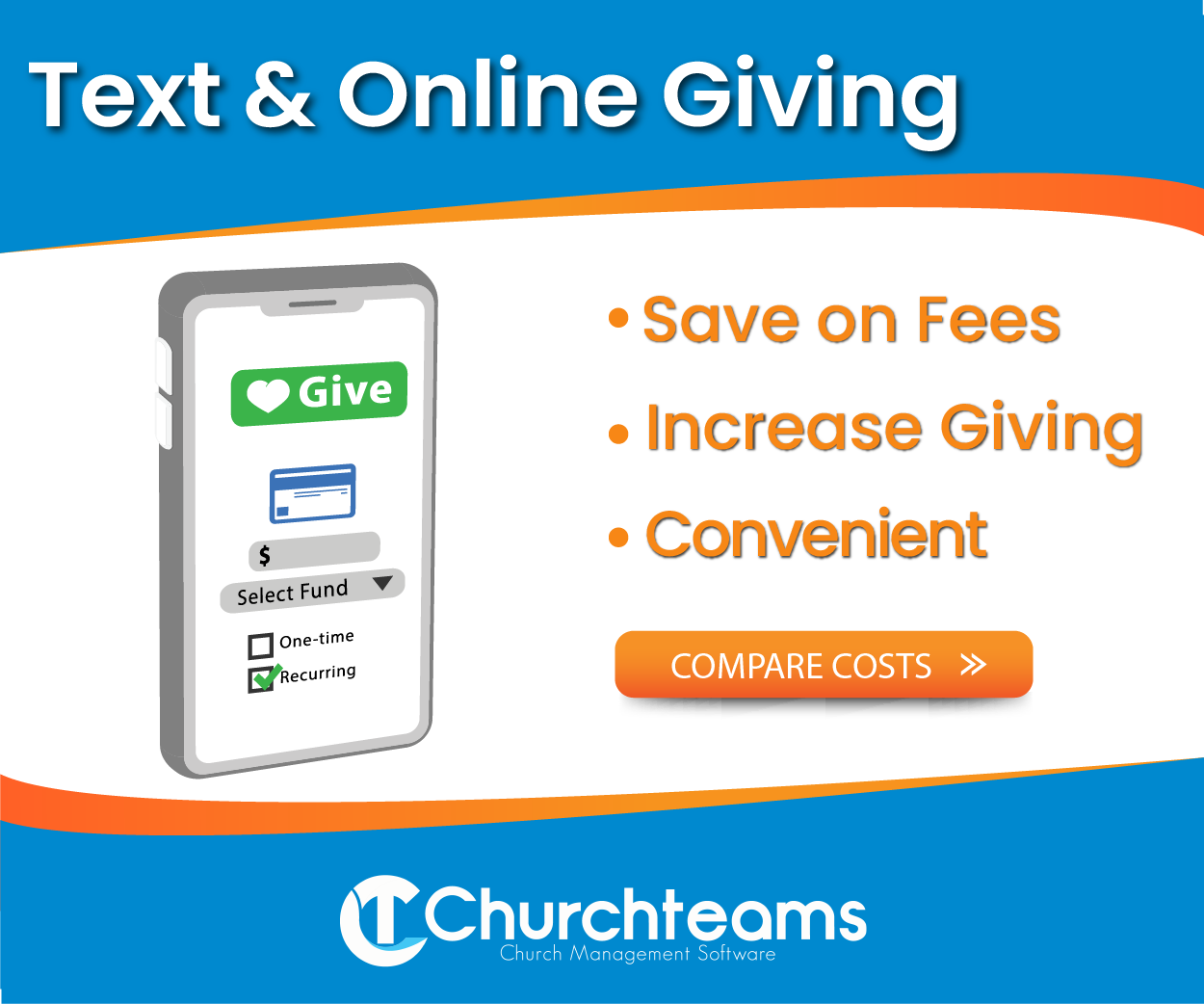 Have you ever wondered why you do what you do? If this verse is accurate (it is), then your actions are an overflow of what's in your heart.
Have you ever wondered why you do what you do? If this verse is accurate (it is), then your actions are an overflow of what's in your heart. 
- First contribution date. This filter identifies the first time a person or a family gives to the church. It indicates that they have a heart for the church and see it as something worth investing in. It is important for the church to reciprocate a heart for them through a follow email, text, or letter. Unfortunately, too few churches have built a system to do this consistently. Some of those who have include an appreciation gift like a gift card or a link to a video or other resource.
- Second contribution date. For some churches the second contribution is actually viewed as more significant than the first gift. They discovered that many first time donors were out of town guests or church shoppers. But, their second donation is seen as the beginning of a greater level of commitment to the Lord and to their church. Using the database to help them identify this step can prompt a pastor to review other data about the person or family and then reach out to encourage them to come to a new member's class, find a group, or serve.
- Most recent contribution date. Combined with other filters that sort for multiple donations over time, this filter helps you discover LAPSED GIVERS. These are people who once gave consistently but haven't given for awhile. i.e. their last gift was many months ago but they gave consistently for an extended time prior to that. This is an indicator that something is happening in the life of this person or family. It could be a job or financial crisis, but it could also be a sign of waivering commitment to the Lord or to the church.
Unfortunately, many pastors have not discovered the power of their database to shepherd their people with excellence. They simply try to keep an eye out for people who either seem to be coming more consistently or haven't been around for awhile. Attendance is a good indicator of a person's heart and we do have tools to help track it more dependably. But, giving is a more subtle indicator that usually shows up earlier giving leadership a runway to connect with and care for people before they take off.
By the way, these report filters are generally used as a filter to list people who fit the criteria. These lists do not show the amount, so that's not the issue. The issue truly is doing everything you can to help people guard their heart.
Next time we'll look at how to automate this process so that the administrative work is done once and then scheduled to prompt the right people and send out the right email or text messages at whatever rhythm best fits your church.



